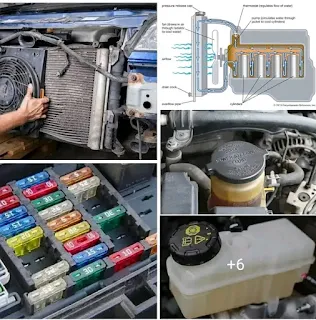Fuel injectors play a crucial role in a vehicle's performance, delivering fuel into the combustion chamber for efficient power generation.
However, over time, these injectors can become clogged or damaged, leading to decreased fuel efficiency, reduced engine power, and even misfires.
To ensure optimal engine performance, it's essential to regularly inspect and clean fuel injectors.
The images below illustrates various fuel injector spray patterns, each representing a different type of issue.
Let's break down what each pattern signifies:
1 FAIR but weak: This indicates that the injector is functioning but is not delivering fuel at optimal pressure.
2. BAD: Split spray pattern: A split spray pattern suggests that the injector's internal components may be damaged or worn, causing the fuel to disperse unevenly.
3. BAD: Jetting on left side: This indicates a problem with the injector's nozzle, resulting in a concentrated fuel spray on one side.
4. GOOD: A uniform, cone-shaped spray pattern is ideal and signifies a healthy injector.
5. BAD: Feathering at top of spray: This pattern suggests that the injector's pintle may be damaged or misaligned, leading to incomplete fuel atomization.
THE IMPORTANCE OF FUEL INJECTOR CLEANING
Regular fuel injector cleaning can help prevent these issues and restore your vehicle's performance. By removing accumulated deposits and contaminants, cleaning can:
1. Improve fuel economy: Clean injectors ensure efficient fuel delivery, leading to better fuel mileage.
2. Enhance engine power: A clean fuel injector system allows for complete combustion, resulting in increased engine power and responsiveness.
4. Reduce emissions: Clean injectors contribute to cleaner emissions by ensuring proper fuel atomization.
5. Prevent engine damage: Clogged injectors can lead to engine damage over time. Regular cleaning helps protect your engine's investment.
HOW TO KEEP YOUR FUEL INJECTORS CLEAN
To maintain healthy fuel injectors and prevent issues, consider the following tips:
Use high-quality fuel: Opt for premium fuel with additives that can help keep injectors clean.
Add fuel injector cleaner: Regularly use a fuel injector cleaner product recommended by your vehicle's manufacturer.
Change fuel filters: Replace your fuel filter according to the manufacturer's recommended schedule.
Avoid idling for extended periods: Excessive idling can contribute to injector deposits.
Consider professional cleaning: For severe cases of injector contamination, seek professional cleaning services.
By understanding fuel injector spray patterns and taking proactive steps to maintain their cleanliness, you can ensure optimal engine performance and extend the life of your vehicle.












